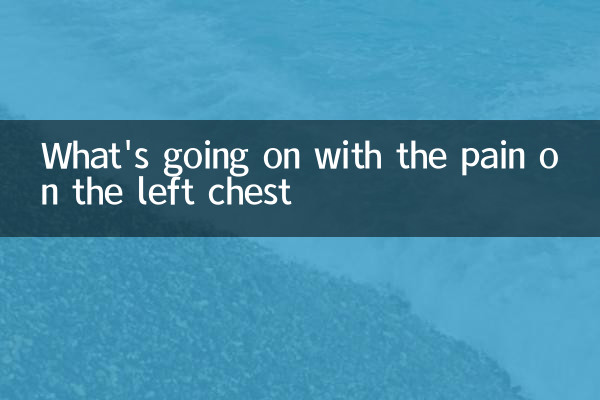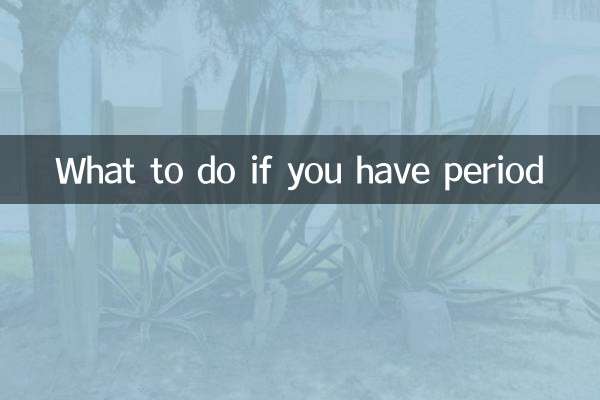What's going on with the pain on the left chest
Recently, pain above the left chest has become a hot topic of health that many people pay attention to. This symptoms can be caused by a variety of reasons, from mild muscle strains to severe heart problems. This article will combine the hot contents of the entire network for the past 10 days to analyze the possible causes, related symptoms and response measures of pain above the left chest.
1. Common causes of pain above the left chest

| Cause classification | Specific reasons | Percentage | Typical Symptoms |
|---|---|---|---|
| Heart problems | Angina pectoris, myocardial infarction | twenty three% | Sense of compression, radiation pain, shortness of breath |
| Respiratory system | Pneumonia, pleuritis | 18% | Cough, fever, deep breathing worsens |
| Musculoskeleton | Cosal chondritis, muscle strain | 32% | Local tenderness, aggravation of activity |
| Digestive system | Gastroesophageal reflux, gastritis | 15% | Burning sensation, diet-related |
| other | Anxiety, shingles | 12% | Accompanied with psychological symptoms and rash |
2. Related topics that have been hotly discussed on the Internet recently
According to the analysis of network data over the past 10 days, the discussion on left chest pain mainly focuses on the following aspects:
1.More cases of sudden chest pain in young people: Many netizens shared their experience of angina pectoris due to staying up late and stress, which has aroused widespread attention to the heart health of young people.
2.Correlation between the sequelae of COVID-19 and chest pain: Some recovered patients report symptoms of persistent chest pain, and medical experts recommend detailed examinations to rule out the possibility of myocarditis.
3.Office crowds have high chest pain: Intercostal neuralgia and muscle strain caused by long-term poor sitting posture have become a new topic of workplace health.
3. Danger signals that need to be vigilant
| Red flags | Possible diseases | Suggested actions |
|---|---|---|
| Pain radiates to the left arm/jaw | Myocardial ischemia | Seek medical treatment now |
| With difficulty breathing | Pulmonary embolism/pneumothorax | Emergency treatment |
| High fever + chest pain | Pneumonia/pleuritis | Seek within 24 hours |
| Herpes zoster appears on the skin | Early stage of shingles | Antiviral treatment within 72 hours |
4. Family emergency response suggestions
1.Stop activity: Stop the current activity immediately and take a comfortable position to rest.
2.Assess the symptoms: Record the nature, duration, inducing and remission factors of pain.
3.Basic inspection: Measure blood pressure and heart rate to observe whether there are other accompanying symptoms.
4.Drug use: Those who have previously diagnosed angina pectoris may take nitroglycerin sublingually. It is not recommended to take medication by yourself in other situations.
5.Medical decision: Seek medical attention immediately if any red flags appear or pain that lasts for more than 20 minutes.
V. Preventive measures
1.Regular physical examinations: Especially for people over 40 years old, electrocardiogram should be performed every year.
2.Improve living habits: Control weight, quit smoking and limit alcohol, and exercise regularly.
3.Posture Management: Avoid bad postures such as bowing your head and hunching your back for a long time.
4.Pressure regulation: Learn relaxation skills to prevent anxiety-related chest pain.
5.Dietary adjustment: Eat less and eat more to avoid excessive exudate gastroesophageal reflux.
6. Latest medical views
According to recent research:
1. Among non-cardiogenic chest pain, about 40% of patients with musculoskeletal problems were eventually diagnosed.
2. The main complaints of chest pain in women after menopause may be significantly increased, which may be related to hormone changes.
3. New detection technologies such as hypersensitive troponin detection can detect myocardial damage earlier.
4. The construction of chest pain centers has shortened the treatment time for patients with acute chest pain by an average of 30%.
Summary: Pain above the left chest may be a signal of various diseases. You should neither panic excessively nor take it lightly. It is recommended to seek medical treatment in time when persistent or repeated chest pain occurs and make a clear diagnosis through professional examinations. Preventive measures in daily life are equally important, and maintaining good living habits is the key to reducing the occurrence of chest pain.

check the details

check the details